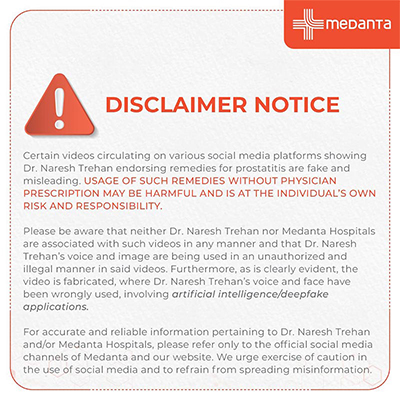Understanding Seizures and Providing Proper First Aid

TABLE OF CONTENTS
One in every 100 people worldwide lives with epilepsy. This makes epilepsy first aid knowledge a potential lifesaver for anyone you might meet.
Many people still panic or take wrong actions when they see someone having a seizure. A common myth suggests that people can swallow their tongue during seizures - they cannot. Putting objects in their mouth can harm them instead. Most seizures end within 2 minutes. Any seizure lasting more than 5 minutes needs immediate medical help.
Medication helps 70% of people with epilepsy control their seizures. Some people still experience breakthrough seizures, and proper first aid prevents injuries and complications. The right seizure first aid steps make a vital difference. Seizures often lead to confusion, falls, and sometimes unconsciousness.
This article covers everything related to epilepsy first aid treatment. You will learn to spot different types of seizures and respond the right way. Your actions during these critical moments will help protect someone at their most vulnerable time.
Understanding Seizure Types and What to Expect
Seizures can affect anyone anywhere. A person's ability to provide proper epilepsy first aid starts with understanding what happens during a seizure.
Seizures come in two distinct types, each showing different characteristics:
Focal seizures: These originate in a specific brain area and affect about 60% of people with epilepsy. These seizures manifest in two ways:
Focal aware seizures: The person maintains consciousness but might experience unusual sensations, déjà vu, stomach discomfort, or irregular movements on one side of their body.
Focal impaired awareness seizures: The person becomes confused and dazed. They might pick at their clothes, smack their lips, or become unable to answer questions for several minutes.
Generalised seizures: These affect both sides of the brain at once and typically cause consciousness loss. Common varieties include:
Absence seizures: Quick staring episodes that last 5-10 seconds
Tonic-clonic seizures: The most recognisable form that starts with muscle stiffness and leads to rhythmic jerking, usually lasting several minutes
Atonic seizures: Sudden muscle tone loss that results in falls
Myoclonic seizures: Quick, shock-like muscle jerks
Seizures typically progress through distinct phases:
Before: Warning signs might appear hours or days ahead
Beginning: People may experience an aura with unusual sensations or emotions
During: The primary seizure activity occurs with physical and awareness changes
After: The recovery period brings confusion, fatigue, and possible headaches
These patterns help people provide appropriate seizure first-aid treatment. Most seizures last just minutes, but some situations need immediate medical help. The right epilepsy first aid steps become clear once you understand the seizure's type and phase.
Essential Epilepsy First Aid Steps
The right actions at the time someone has a seizure can make a significant difference in their safety. These simple epilepsy first-aid steps will help protect someone during this vulnerable time.
"Stay, Safe, Side" forms the foundation of seizure first aid:
Stay with the person and start timing the seizure
Keep calm – your composure helps others stay calm, too
Look for a medical ID that might give specific instructions
Track the seizure duration from start to finish – this helps determine if emergency help is needed
Keep the person Safe
Clear dangerous objects from their vicinity
Lead them away from hazards if they appear confused or wander
Let their movements happen naturally – restraining won't stop a seizure and could cause injury
Make breathing easier by loosening any tight clothing around their neck
Turn the person onto their side if they're not awake and aware
Place a soft, small cushion under their head
Position them with their mouth facing downward to keep the airway clear of saliva
Important things to avoid:
Never put anything in their mouth – people cannot swallow their tongue during seizures
Wait until they are fully alert before offering water, pills or food
Allow their movements to happen naturally without restraint
After the seizure:
Remain present until they become fully awake and alert
Help them feel safe with reassurance
Use simple terms to explain what happened once communication is possible
Water-related seizures need special attention. Keep the person's head above water and contact emergency services immediately, even if they seem recovered since inhaled water might cause complications.
When to Call Emergency Services
Most seizures end by themselves within a few minutes. However, some situations require immediate medical attention. Quick recognition of these critical moments plays a vital role in epilepsy first aid.
Call emergency services immediately if:
The seizure lasts 5 minutes or longer
A second seizure starts right after the first one ends
The person stays unconscious between seizures
Breathing problems occur during or after the seizure
The seizure happens in water (even if they seem recovered)
The person gets injured during the seizure
The person is pregnant
This is their first known seizure
The person has diabetes and becomes unconscious during a seizure
The person doesn't return to normal after the seizure ends
The person stays unresponsive for more than 5 minutes after the seizure stops
Three or more seizures occur within 24 hours
These scenarios might indicate status epilepticus—a medical emergency where seizures continue too long or happen too close together. This condition needs urgent treatment to prevent possible neurological damage.
Most seizures naturally stop within 1-3 minutes without causing harm. People who have epilepsy usually have a care plan with their doctors that explains what to do during a seizure.
Your emergency services call should include:
The seizure's duration
The person's epilepsy status (if known)
Any injuries sustained
Their current breathing condition
Whether this is unusual for them (if known)
This information helps emergency teams prepare the correct treatment before arrival. You should stay with the person until medical help arrives and continue basic seizure first aid. Keep them safe and place them in the recovery position if they're unconscious.
Quick action in these situations can save lives, making epilepsy first aid knowledge a great way to get proper help quickly.
Conclusion
Learning epilepsy first aid is a vital skill anyone can master. Seizures strike without warning and affect about 1 in 10 people during their lifetime. Your quick thinking and right actions can make a huge difference to someone having a seizure.
The core steps "Stay, Safe, Side" will guide your response in critical moments. You should stay with the person and time the seizure. Keep them safe by clearing dangerous objects around them. Turn them to their side if they're unconscious.
It also helps to know when you should call emergency services. While most seizures end naturally within minutes, some situations just need immediate medical attention. Look out for seizures lasting over 5 minutes, breathing problems, or seizures in water.
Your actions during a seizure matter as much as what you shouldn't do. Don't put anything in someone's mouth during a seizure. Don't try to hold them down. Don't give them food or water until they recover fully. Without a doubt, your calm response can prevent injuries when someone has a seizure.
FAQs
What are the key steps in providing first aid for someone having a seizure?
The key steps are "Stay, Safe, Side." Stay with the person and time the seizure. Keep them safe by removing dangerous objects and turning them onto their side if they're not awake. Remember not to put anything in their mouth or restrain their movements.
How long does a typical seizure last, and when should I call emergency services?
Most seizures last less than 2 minutes. However, you should call emergency services if the seizure continues for 5 minutes or longer, if the person has difficulty breathing, or if they don't regain consciousness between seizures.
Is it true that a person can swallow their tongue during a seizure?
No, it's a myth that a person can swallow their tongue during a seizure. Never put anything in a person's mouth during a seizure, as this can cause injury. Instead, focus on keeping them safe and turning them onto their side if they're not conscious.
Are there different types of seizures, and do they require different responses?
Yes, there are different types of seizures, including focal and generalised seizures. While the basic first aid principles remain the same, understanding the type can help you respond more effectively. For example, during a focal-aware seizure, the person might remain conscious but experience strange sensations. In contrast, a generalised tonic-clonic seizure often involves loss of consciousness and requires more intensive care.






